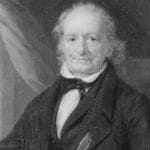John Wilkes Booth, the notorious assassin of President Abraham Lincoln, rests in an unmarked grave within his family’s plot at Green Mount Cemetery in Baltimore, Maryland. This burial site, shrouded in mystery and controversy, continues to captivate historians and the public alike.
The Burial of an Assassin: A Timeline of Secrecy
After fatally shooting President Lincoln at Ford’s Theatre on April 14, 1865, Booth embarked on a desperate twelve-day flight from justice. His journey ended on April 26th when he was cornered and killed by Union soldiers in Virginia. Fearing his grave could become a site for Confederate sympathizers or potential grave robbers, authorities initially laid him to rest in secret beneath a prison floor at the Old Penitentiary in Washington, D.C.
It wasn’t until February 1869 that his remains were disinterred and released to the Booth family. They chose to rebury him in their family plot at Green Mount Cemetery, a sprawling Victorian cemetery known for its notable burials. However, even then, they chose not to mark his specific burial spot.
A Grave Unmarked: The Booth Family Plot
The Booth family plot at Green Mount Cemetery is easily identifiable by the headstone bearing the family name. Yet, the exact location of John Wilkes Booth’s remains within that plot remains unmarked. Some historians believe that the family, particularly his brother Edwin Booth, a famous actor of the time, feared that a headstone would attract unwanted attention, turning his brother’s grave into a shrine for those who sympathized with his actions.
This lack of a headstone has only served to intensify the intrigue surrounding his final resting place. Over the years, people have developed traditions around the unmarked grave. Visitors often leave pennies on what they believe to be the burial spot. Some whisper that an unassuming stone marks Booth’s final resting place, while others believe it belongs to his sister, leaving the true location shrouded in doubt.
Pennies on a Grave: A Silent Dialogue with History
The tradition of leaving pennies on John Wilkes Booth’s presumed grave site is a curious one, often sparking debate about the appropriate way to remember those who have committed such heinous acts. It’s not about honoring Booth; it’s about remembering Lincoln.
Lincoln’s image is on the penny. So, by leaving it face up on the Booth family headstone, it’s almost as if Lincoln is symbolically looking down on Booth’s grave, a constant reminder of his enduring legacy and Booth’s ultimate failure. It’s a symbolic act, a way of giving Lincoln “the last word.”
John Wilkes Booth’s Legacy: A Perpetual Source of Debate
John Wilkes Booth’s unmarked grave at Green Mount Cemetery stands as a stark reminder of the nation’s complex relationship with its own history. It begs the question: how do we remember those who committed terrible acts? Should their memory be erased, or should it serve as a cautionary tale?
Some argue that any form of acknowledgment, even leaving a penny, is inappropriate, believing his grave should remain forgotten – a testament to the gravity of his actions. Others see it as a powerful reminder of the dark side of history and the importance of learning from the past. This ongoing debate highlights the struggle to balance remembrance with the need to avoid glorifying those who committed acts of violence against our nation.
Green Mount Cemetery walks a difficult line, balancing the preservation of history with the sensitivities surrounding such a controversial figure. They acknowledge the significance of the site while discouraging any attempts to glorify or celebrate Booth’s actions.
The story of John Wilkes Booth’s final resting place extends far beyond the simple geographical question of its location. It delves into the complex relationship between memory, justice, and the legacy of the Civil War in America. It compels us to consider how we, as a nation, choose to remember our past, even its darkest chapters.
- Unveiling the Enigma: Mansoureh Khojasteh Bagherzadeh’s Public Appearances & Private Life in Iran - July 18, 2025
- Unveiling the Mystery: Mansoureh Khojasteh Bagherzadeh’s Husband: A Rare Glimpse into a Private Life - July 18, 2025
- Unveiling Masoud Khamenei’s Mother: Power, Influence, and Iran’s Future - July 18, 2025

















2 thoughts on “Where is John Wilkes Booth Buried? Unveiling the Truth and Legends”
Comments are closed.